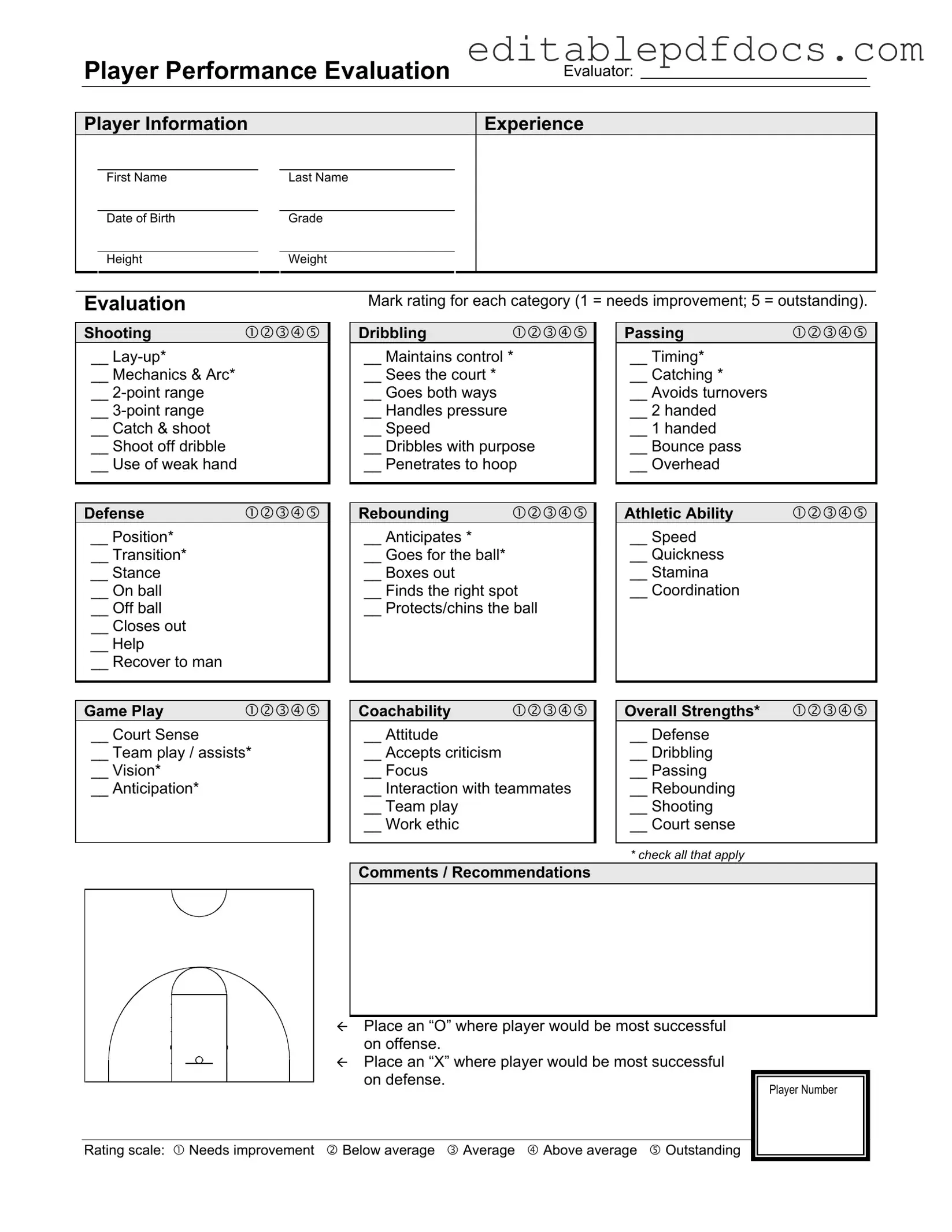Filling out a Basketball Evaluation form can seem straightforward, yet many people make common mistakes that can affect the accuracy of the assessment. One frequent error is neglecting to provide complete player information. Missing details such as the player's first and last name, date of birth, or grade can lead to confusion and misidentification. Ensuring all fields are filled out accurately is essential for effective evaluation.
Another mistake often encountered is failing to use the rating scale correctly. Evaluators sometimes overlook the scale of 1 to 5, where 1 indicates a need for improvement and 5 signifies outstanding performance. Misunderstanding this scale can result in inflated or deflated ratings, which do not reflect the player's true abilities.
Inconsistent ratings across different categories can also skew the evaluation. For instance, if a player receives a high score in shooting but a low score in passing, it may suggest a lack of balance in their skills. Evaluators should aim for a comprehensive assessment that accurately represents the player’s strengths and weaknesses.
Some evaluators fail to check all applicable boxes in the "Overall Strengths" section. This oversight can lead to an incomplete picture of the player's capabilities. By taking the time to consider each category, evaluators can provide a more thorough evaluation.
Another common mistake is not providing specific comments or recommendations. While the numerical ratings are important, qualitative feedback offers context that numbers alone cannot convey. Clear, constructive comments can guide players on areas for improvement and highlight their strengths.
Additionally, evaluators sometimes forget to place an "O" for offensive success and an "X" for defensive success. This visual representation is crucial for understanding where a player may excel on the court. Omitting this step can lead to a lack of clarity in the evaluation.
Another issue arises when evaluators do not consider the player's overall game play. Categories such as court sense, team play, and vision are vital for a complete evaluation. Ignoring these aspects can result in an incomplete assessment of the player's contributions to the team.
Lastly, some evaluators may rush through the process, leading to hasty judgments. Taking the time to observe and reflect on each player's performance is essential for a fair evaluation. A thorough and thoughtful approach will yield the most beneficial results for both the player and the coaching staff.
